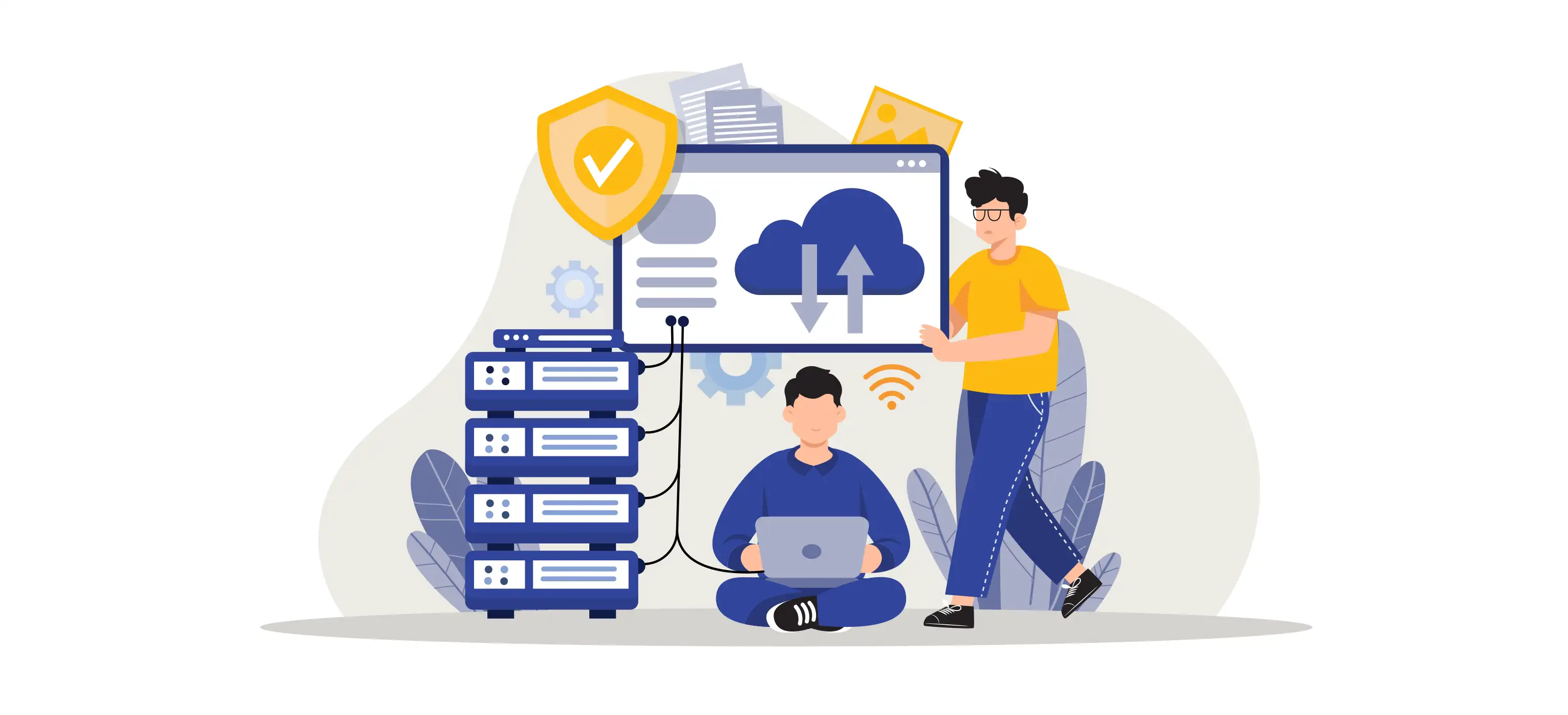 Asim Nath Dubey
Apr 30, 2025
Asim Nath Dubey
Apr 30, 2025

The rise of cloud-based solutions is transforming how financial data is stored, accessed, and utilized, even as many organizations continue to use traditional accounting systems.
The global accounting software market reached over $15.1 billion in 2024, with cloud-based solutions dominating at 67% of the market. A survey by Accounting Today found that 78% of small businesses now rely on cloud accounting platforms.
In contrast, traditional systems remain the choice for larger corporations and institutions tied to legacy setups, making up the remaining 33% of the market.
Whether you're a financial professional weighing the pros and cons or a small business owner considering an upgrade, understanding the key differences between cloud accounting and traditional systems is essential.
In this guide, we’ll take a close look at both approaches—Cloud Accounting and Traditional Accounting—to help you make the right choice for your financial operations. We’ll cover the following topics:
Traditional and cloud-based accounting differ significantly in their approach and functionality. Here's a closer look at these two systems:
Traditional accounting involves software like Tally, QuickBooks Desktop, and Sage 50, which are installed on your organization's local computers or servers. These programs let you input financial data and maintain records directly on your computer's hard drive. Once installed, you can access various features, with all your data securely stored on your device.
Cloud accounting uses cloud infrastructure—a mix of hardware and software that includes computing power, networking, and storage. This setup allows you to access real-time data from any internet-connected device, such as your mobile, laptop, or desktop. Let’s take a deeper look at what cloud computing is.
You can access cloud accounting platforms through providers offering services like Infrastructure as a Service (IaaS), Platform as a Service (PaaS), and Software as a Service (SaaS). Major cloud providers include Amazon Web Services (AWS), Microsoft Azure, and Google Cloud Platform (GCP)
The following table features the key differences between Traditional accounting and Cloud Based Accounting.
|
Features |
Traditional Accounting |
Cloud Accounting |
|
Accessability |
Limited access to the location where it is installed. |
Access from anywhere and anytime via laptop, tablet, or smartphone with an internet connection |
|
Cost Structure |
One-time licensing fees, installation, and often additional hardware investment. |
Operates on a subscription model (monthly/yearly), which reduces upfront investment. No need for expensive hardware or servers. |
|
Data Security |
Security depends on in-house infrastructure; risk of data loss or theft if local systems are compromised. |
Automated backups, encryption, secure cloud servers with multiple layers of protection and compliance certifications (e.g., ISO, GDPR). |
|
Scalability |
Requires new hardware, additional licenses, or IT support |
Easily scalable features and user access with subscription Plans |
|
Collaboration |
Difficult to collaborate remotely. Requires manual exports and transfers in sharing data, increasing the risk of version control issues. |
Multiple users can work simultaneously on real-time data. Enables seamless collaboration between accountants, business owners, and financial advisors. |
|
Updates |
Only manual updates with extra costs. |
Automatic updates are included in the subscription |
|
Backups |
Scheduled and in-house managed backups |
Automatic backups and maintenance are handled by the service provider. |
|
Eco-friendliness |
Involves printing reports, invoices, and physical file storage. |
Encourages digital record-keeping and paperless processes. |
|
Disaster Recovery |
Costly and complex disaster recovery plans. |
Built-in automatic recovery systems to minimise downtime. |
|
Other Business Tools Integration |
Limited integration requiring custom solutions or third-party middleware. |
Easy integration with CRMs, e-commerce platforms, payroll systems, inventory tools, and banking APIs. |
Traditional accounting is popular among various groups and organizations for its simplicity and practicality:
Cloud accounting is gaining popularity among diverse users, including:
Job prospects in traditional vs. cloud accounting are changing with technology. According to the U.S. Bureau of Labor Statistics, accounting job roles are projected to grow by 6% by 2032. However, cloud-related roles are growing at a faster rate, with an estimated 12% annual increase due to demand for tech-savvy financial professionals.
Traditional accounting jobs, like bookkeeping, tax preparation, and audit support, are in steady demand but declining in some areas. These roles need strong accounting knowledge and on-premises software skills. However, automation and cloud solutions are reducing routine tasks, limiting growth.
Some of the prospective job roles in traditional accounting include:
Cloud accounting is growing rapidly due to digital transformation. Jobs involve using platforms like QuickBooks Online, Xero, or Sage. Skills in cloud software, data analytics, cybersecurity, and integration are highly valued. New roles include cloud systems setup, SaaS consulting, and automation specialists, expanding opportunities globally.
Some of the popular Cloud Accounting job roles are:
Here we have made a comparison of traditional accountants and cloud accountants. The salaries of both cloud and traditional accountants depend on factors like experience, location, company size, and skill set. Cloud accountants earn more on average than traditional accountants, mainly because of their specialized skills in digital tools and the increasing demand for remote, tech-enabled accounting services.
|
Role |
Average Salary (Traditional) |
Average Salary (Cloud-Based) |
|
Accountant |
$55,000/year |
$65,000/year |
|
Financial Analyst |
$65,000/year |
$75,000/year |
|
Bookkeeper |
$40,000/year |
$50,000/year |
|
ERP Specialist |
$70,000/year |
$85,000/year |
Traditional accountants typically earn $60,000 to $85,000 annually. Their work revolves around manual bookkeeping, preparing financial statements, and handling tax filings using tools like QuickBooks Desktop, Excel, or traditional ERP systems. Salaries are generally reasonable, with higher earnings for senior roles or CPA-certified professionals.
Cloud accountants, on the other hand, earn between $70,000 and $100,000 annually. Their work centers on cloud-based tools like QuickBooks Online and Xero, leveraging automation and real-time data access. These professionals often provide advisory services and manage a broader range of client needs. The demand for digital skills, analytics, and remote capabilities contributes to their slightly higher salaries. Additionally, cloud accountants enjoy flexible work opportunities and remote roles, reflecting the evolving demands of the profession.
The shift to cloud-based accounting is transforming how businesses handle finances. Traditional systems are being replaced or adapted to hybrid models as companies embrace the flexibility, real-time capabilities, and integration potential of cloud platforms.
Key trends include:
Cloud accounting offers accessibility, cost savings, and efficiency, making it a preferred choice for modern businesses. This shift is not just a technological upgrade but a fundamental change in financial operations and workforce skills. Here you may check out the advantages of cloud computing.
As cloud technology evolves, accountants and businesses must adapt to stay competitive in a smarter, faster, and more connected financial landscape.
Here is the list of other major locations where Edoxi offers Accounting and Finance Courses
Accounting and Finance Courses in Dubai | Accounting and Finance Courses in Qatar | Accounting and Finance Courses in Bahrain | Accounting and Finance Courses in Riyadh | Accounting and Finance Courses in Kuwait | Accounting and Finance Courses in Muscat |

Asim Nath is an Accounting and Microsoft Office trainer at Edoxi Training Institute. He has over 13 years of training experience and has successfully trained more than 3000 professionals in Accounting and Microsoft Office applications. Asim’s specialisations include Financial Accounting, Tally, Zoho and Quickbooks. His background in financial accounting adds valuable insights to business presentation training.
Asim is an expert in MS Office, including PowerPoint, Excel, and Power BI, positioning him as a well-rounded specialist in the Microsoft Suite. Asim employs a practical, business-focused teaching methodology. His one-to-one training approach ensures each student receives personalized attention. He emphasizes real-world applications, helping professionals create impactful business presentations.